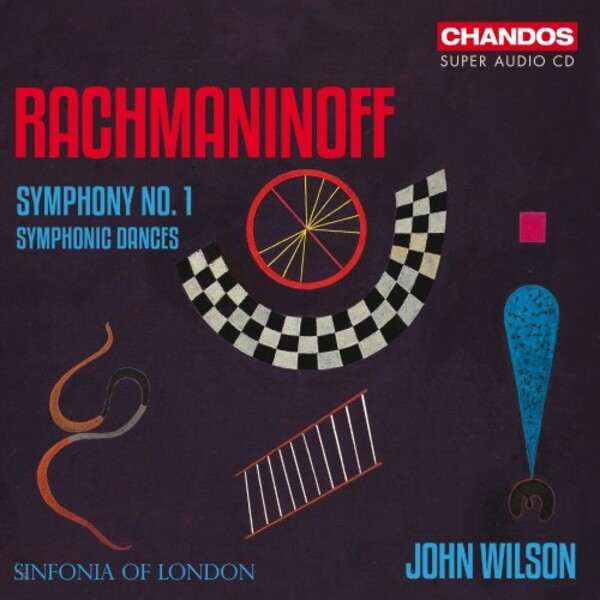RACHMANINOV Symphony No 1. Symphonic Dances (Wilson)
View record and artist detailsRecord and Artist Details
Genre:
Orchestral
Label: Chandos
Magazine Review Date: 06/2025
Media Format: Super Audio CD
Media Runtime: 78
Mastering:
DDD
Catalogue Number: CHSA5351

Tracks:
| Composition | Artist Credit |
|---|---|
| Symphony No. 1 |
Sergey Rachmaninov, Composer
John Wilson Sinfonia of London |
| Symphonic Dances (orch) |
Sergey Rachmaninov, Composer
John Wilson Sinfonia of London |
Author: David Gutman
Majoring less on seamless idiomatic flow than robust attack and absolute clarity of articulation, John Wilson and the Sinfonia of London complete their Rachmaninov symphony cycle where Yannick Nézet-Séguin and the Philadelphia Orchestra started out (DG, 2/21). Works early and late often make a sensible pairing and these two are thematically cross-referenced. They also present a range of textual imponderables: Wilson and his assistant Ed Liebrecht are credited with new performing editions of the Symphonic Dances and First Symphony respectively. The accompanying documentation could do more to elucidate but it’s no surprise that some famously mutable passages go their separate ways.
The maestoso climax of the symphony’s opening movement is glockenspiel-capped in Philadelphia whereas Wilson dispenses with tintinnabulum in the manner of Vladimir Ashkenazy (Decca, 11/83 et seq). Either strategy can work. Not so the parade-ground percussion that torpedoes so many recordings. At fig 7 in the first of the Symphonic Dances Wilson and Nézet-Séguin align to give us the spooky piano interpolation not in the old printed score. At the close of the third movement Wilson’s tam-tam breaks cover early enough to make new sense of the ending. He neither cuts off its final stroke prematurely nor lets it resound indefinitely as happens in Philadelphia.
The hand-picked players of his Sinfonia of London are thrilling in these big moments, a relatively small ensemble conjuring the heftiest sonorities. You may even find the strings intimidating when the symphony’s hesitant first-movement second subject blazes into fortissimo life. That said, there is airborne Mendelssohnian playing to marvel at in the Allegro animato and eloquent clarinets and much besides in the Larghetto. Just occasionally the emotional continuity Ashkenazy used to achieve in these scores gets lost in Wilson’s determination to keep us listening in the moment.
The recording venue, St Augustine’s, Kilburn, is tried and tested. Even so, the first of the Symphonic Dances brings oboe and clarinet suddenly right into our laps, presaging the arrival of that now famous alto saxophone melody. This too proves well lit, the long-delayed, super-rich, faux-Philly string response more insistent than the real thing. I personally would have traded some visceral engagement for a tad more nostalgic wistfulness and sonic distance. More generally, this most resourceful of symphonic farewells pulsates with colour and life. Rachmaninov would have loved the rhythmic definition.
Lest the Sinfonia of London be traduced as just another ‘pickup’ orchestra, it should be noted that both these pieces have toured to great acclaim before live audiences. Not always super-refined or conventionally polite, such music-making warrants the strongest recommendation.
Discover the world's largest classical music catalogue with Presto Music.

Gramophone Digital Club
- Digital Edition
- Digital Archive
- Reviews Database
- Full website access
From £8.75 / month
Subscribe
Gramophone Full Club
- Print Edition
- Digital Edition
- Digital Archive
- Reviews Database
- Full website access
From £11.00 / month
Subscribe
If you are a library, university or other organisation that would be interested in an institutional subscription to Gramophone please click here for further information.




